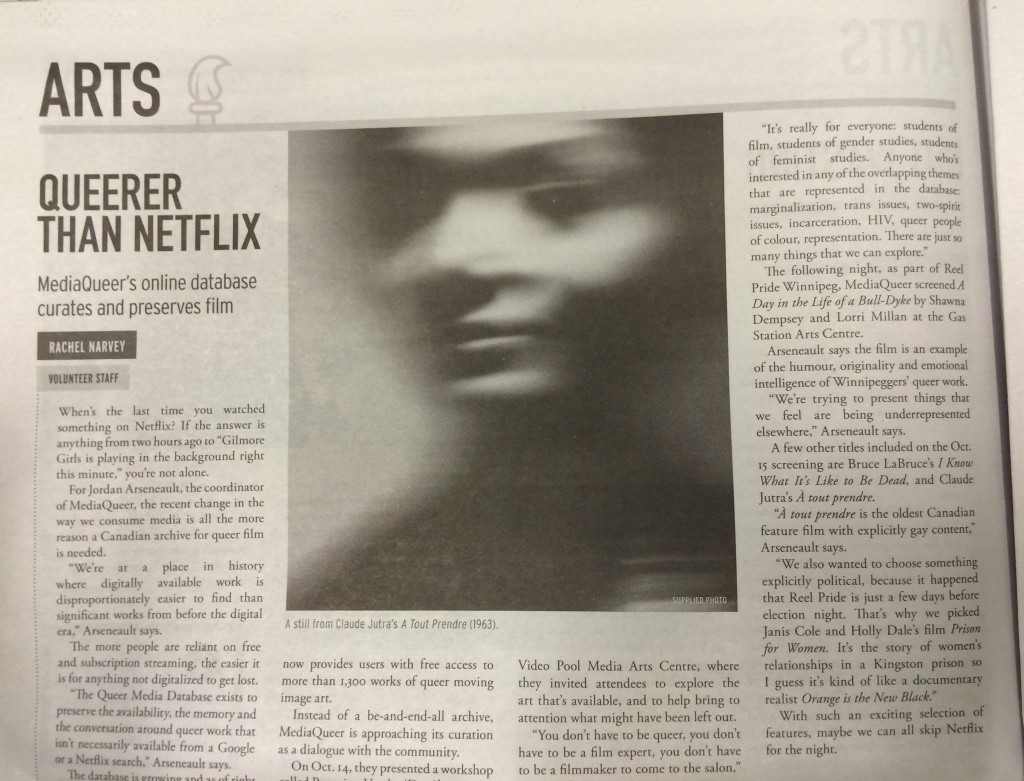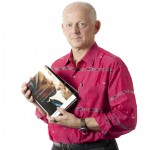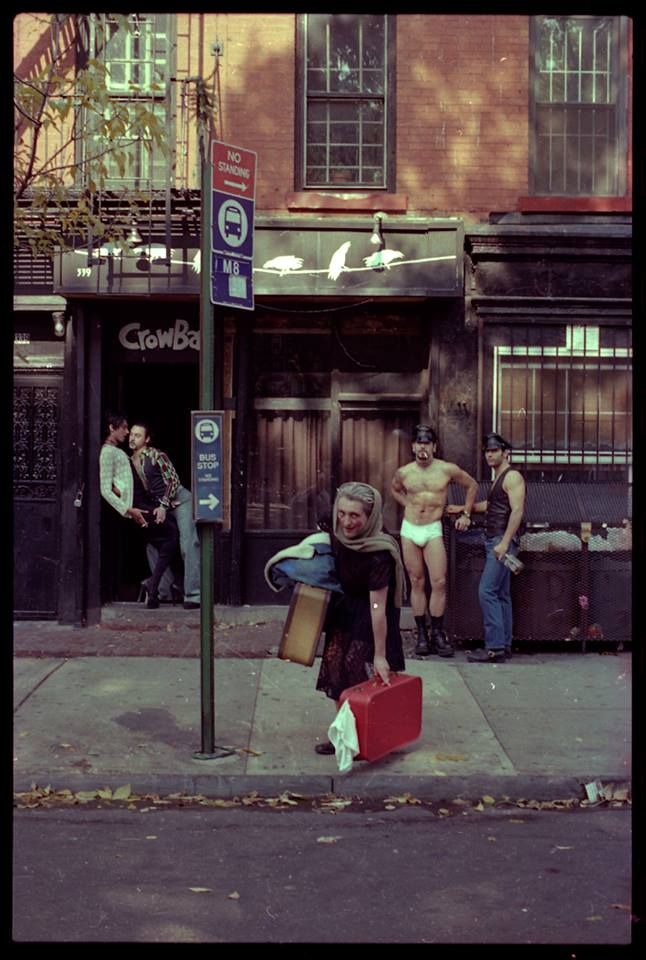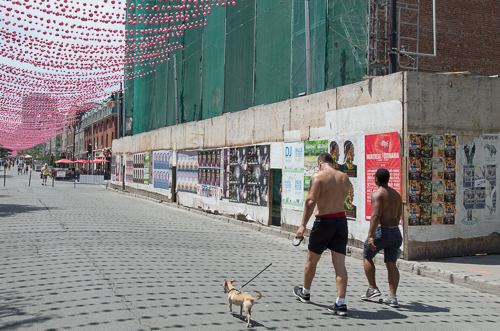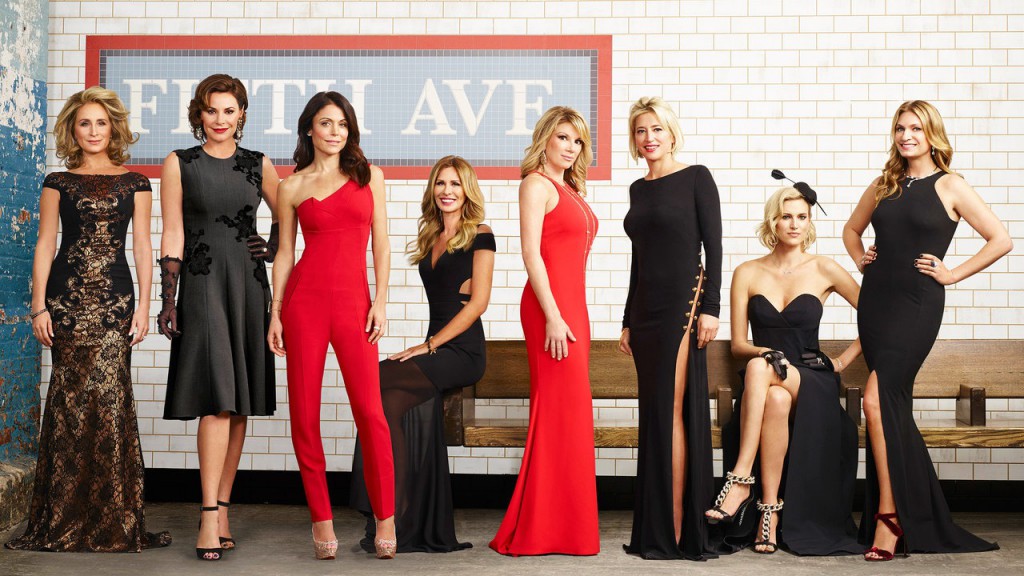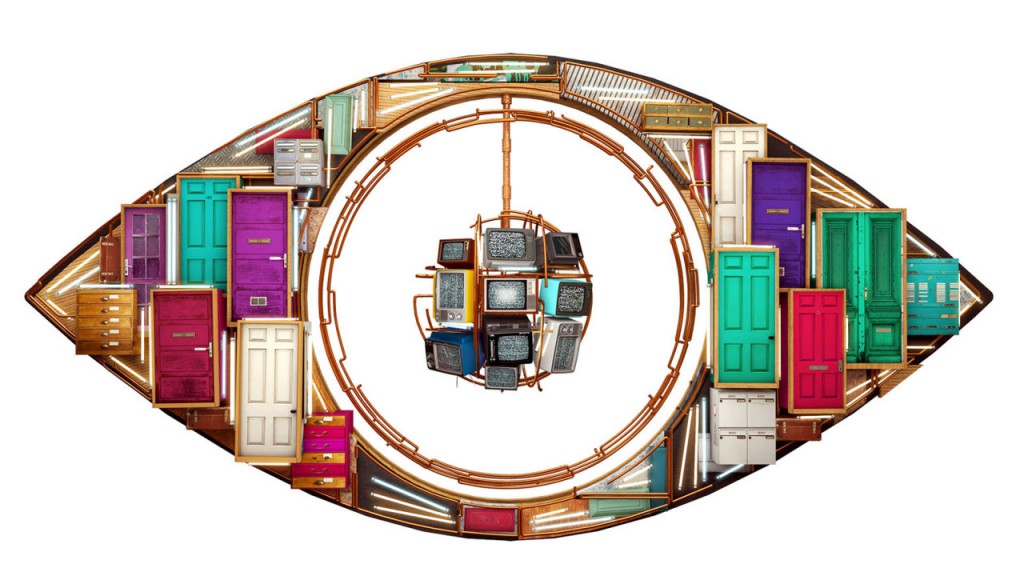The post Bums in Seats: Queer Media Database of Canada/Québec appeared first on &.
]]>The lights dim for the second of two screenings titled Matraques, a special event curated and organized by the Queer Media Database of Canada/Québec in collaboration with the queer film festival Image+Nation. The two-part screening is composed of twenty-one vignettes, each a short film or extract about the history of literal and metaphorical policing of queers in Canada. As the screenings end and the Q&A session starts, two things become evident. One: many people in the room know each other and others are being readily introduced, which makes knowledge of Canada’s queer history emerge out of the realm of shared collective memory, intensifying the already deeply communal nature of the event. Secondly, the bodies in the seats range from undergrads to seasoned film enthusiasts. Witnesses connect and respond to the programming on a visceral level, which for the younger people in the crowd enhances the immediacy of this history as represented in films that otherwise might have come across as demagogical or didactic. Judging by how no one feels like leaving Concordia University’s Cinema de Sève long after the films have finished, the screening is a resounding success.
A couple of days before the screening, I met up with Dr. Thomas Waugh and Jordan Arseneault. Prof. Waugh is Research Chair in Sexual Representation and Documentary Film at Concordia University’s Mel Hoppenheim School of Cinema and president of the Queer Media Database Canada-Québec. Waugh’s books include the anthologies The Perils of Pedagogy: The Works of John Greyson (with Brenda Longfellow and Scott MacKenzie, 2013); the collections The Fruit Machine: Twenty Years of Writings on Queer Cinema (2000) and The Right to Play Oneself: Looking back on Documentary Film (2011); the monographs Hard to Imagine: Gay Male Eroticism in Photography and Film from their Beginnings to Stonewall (1996), The Romance of Transgression in Canada: Sexualities, Nations, Moving Images (2006), Montreal Main (2010). He is also co-editor of the Queer Film Classics book series. Arseneault is the coordinator of the Queer Media Database Canada-Québec, as well as a drag performer, social artist, writer, meeting facilitator, translator and former editor of 2Bmag, Québec’s only English LGBTTQ monthly magazine.
According to the website, the purpose of the Queer Media Database of Canada/Québec is to “is to maintain a dynamic and interactive online catalogue of LGBTQ (lesbian, gay, bisexual, transgender, and queer) Canadian film, video and digital works, their makers, and related institutions.
How did the project come to be?
TW: There is a historic basis for the Media Queer Database. 20 years ago, when I started developing an encyclopedic project on Canadian queer moving image media, I saw and documented everything I could, thousands of short and long works. This documentation ended up in print form in my 2006 book The Romance of Transgression in Canada as an appendix to the main critical and analytic body of work. There are about 350 institutions and individuals embedded in the individual works that were catalogued and described. That print database festered and within five or six years we decided to bring it to life as a kind of living digital archive, using a Wiki model that would be maintained over time. My job is to supervise Jordan and other people working with the project, as well as guide the advisory board and push the project along. I try to empty my brain of data.
What do you mean by “Wiki model?” Does taking the online encyclopedia as a model imply a collaborative, open-source aspect for the archive?
JA: Copyright-wise, we decided to make it creative commons, which is different than a lot of academic material. This is a part of our mandate. There is also a submission form on the website. In other words, people can’t live-edit like they do on Wikipedia, but we do regular updates based on the submissions people give us. As the coordinator of the project, I periodically take the submissions that people have made, look at who we need to biographize, and then enter their filmographies, translate them, and so on.
Is there a lack of attention paid to Canadian queer cinema that this project is trying to address?
TW: Absolutely. Canadian work, especially in French, tends to become invisible in the global market. This is why we are committed to maintaining access to and visibility of these works. For this reason, the second phase of the project, once the website was up and running and our funds secured, became about programming. The Sunday event, Matraques, will be our fifth program of short and long films screened in the festival context in Canada. We are going international in 2016, with programs in India, France and Italy.
How is the project funded?
TW: We get funding from Concordia University, Canada Council, Heritage Canada and SSHRC. We also have partnerships with organizations across Canada who contribute moral support, facilities and some money, mainly in the form of accommodations and venues.
How has applying to these institutions and being helped by them verbalized the project?
TW: That is a very clever, Canadian question. Canadian culture and education are very much shaped by grant applications and criteria that everyone is scrambling to meet.
JA: We have been extraordinarily blessed with understanding on the part of these juries. People seem to get it. We applied for project funding that emphasized the national scope, research creation, public access to archival works… These are some of the trends we’ve tapped into. On the other hand, we haven’t been successful with one provincial funder who couldn’t conceive why we weren’t also streaming films. For them, a website hosting descriptions of artists and films did not really mean that much. Having said that, and having done the grant writing on the project since 2013, I find that there has been a very nice wave of understanding about the inherent value of having open-source material available on historic works. The AIDS Activist History Project, which is run by Alexis Stockwell at Carlton University and which collects oral history, interviews and names of activists and artists, has been similarly successful in that people understand how valuable primary source materials are.
TW: Streaming the films would also be great, but we can’t deal with the legality and materiality of rights ownership. Not only is it counter to our philosophy of copyleft and access, but it would also be a full-time industrial activity to maintain rights for 3,000 works. In fact, we want to support the distributors, exhibitors and rights owners who are doing their best to provide access to these works.
What are the project’s other institutional ties across Concordia? Prof. Waugh, you are a FIlm Studies professor at Mel Hoppenheim School of Cinema, which also runs the Moving Image Resource Center here at Concordia.
TW: We are friends with them all. My primary unit is obviously the Mel Hoppenheim School of Cinema, that’s our nerve center in a way. However, it might be bodies that matter rather than institutions. This would not be happening if it wasn’t for individual people’s passions and obsessions.
We are sitting in Concordia’s Fine Arts PhD Study Space here in the Fabourg Building in downtown Montreal, where the office for the project is located. How does one go about acquiring a space like this? How does it help you achieve your goals?
JA: We had to do an application to the Faculty of Fine Arts, which includes conversations about outcomes, partner grants and byproducts, including how many student employees there are. There is a strong pedagogical component to the project, the training and mentoring of undergraduate and graduate students involved in the project either as interns or employees. That was a requirement for obtaining the space. In that sense, the project is part of the larger Fine Arts pedagogical operation. This space is sort of weird, with all the VHS cassettes and lots of cardboard boxes. There is some technology here, but we don’t really use that stuff (laughs).
JA: When I need to transfer what we’ve received from a filmmaker on beta to MiniDV to DVD, I have to go to one of our partner organizations. At best, we could hobble together a VHS-to-DVD [converter]. In other words, there could be more technical equipment here, but we are happy to have obtained this space as a place for the project to legally have an address. In a way, the materiality of this space reflects the obsolescence of a lot of material and technology we deal with: from festival catalogues to films on formats ranging from tape to DVD.
Within the next two years, what began as a distant pipe dream for many of the organizations we work with, making the films legally streamable online, will finally be a reality. This is maybe forty percent of the materials we are talking and writing about.
TW: We will host direct links to these works. We will remain necessary because none of the distributors are queer per se. We need to claim kinship with all these objects and people; otherwise, they remain unidentified. The distributors, out of politics of impartiality, do not play the game of naming that is essential for us. The presumption of community and kinship through naming is at the core of the project.
Moreover, I like the concept of materiality, as it segues into corporeality, and the audience’s bums in seats. They are the ultimate matter of this project to me, so it is very exciting to meet them all across the country and see them discovering these works.
The knowledge that emerges out of the database is embodied in the screening events that seem central to the project. Could you tell me more about these events?
JA: We will have organized nine such events across Canada by the end of the inaugural year. In Toronto, for example, we were in the Buddies in Bad Times community theatre in the Village, where, even though we presented with the Inside Out film festival, we screened during Pride rather than compete for attention in the festival context. The event was sponsored by the Canadian Lesbian and Gay Archives, and it was in dialogue with so many other events. In Vancouver, on the other hand, we were in the very chic Vancity Theatre and that was a more traditional cinema experience, with all the trappings of a film festival.
How do you envision these events? What kind of audience engagement are you trying to create, and what kind of “look and feel” do you think is the most conducive to the project?
JA: We do two different things. In Winnipeg, we were showing a film called Prison for Women by Janis Cole and Holly Dale, as well as Claude Jutra’s À tout prendre, a very crypto-gay film. However, I did a salon with local filmmakers, curators and their local distributer called Videopool the day before in order to get input about what we are missing in the catalogue. Before coming to this project, the screenings I’ve attended and organized were about hanging a sheet and acquiring enough folding chairs in order to watch a film that someone physically brought from the Berlin festival, for example. Film festivals are important for the legitimization of queer cinema, and so is the sense of community. That is why I love that sort of artisanal, communal, “pink popcorn” practice of spectatorship where people don’t mind if they don’t have the perfect line of sight. So in Winnipeg we got to do both a venue screening and a salon. We are doing another salon this coming January at Videofag, a queer space in Toronto where we will again be talking about what is missing from the archive and what our next foray of research should be.
What are the requirements for being added to the database?
JA: To be included, the work needs to have been shown twice publicly. Otherwise, the profusion of eligible works would be astronomical. We are still considering self-published work. For example, with web-based work, if it has been seen 1,300 times, that might count as a public showing. Because, let’s be clear, in the Canadian art realm, a majorly distributed work might have been shown fourteen times. It’s all still very indie.
What links everything from the latest Xavier Dolan film to a lesbian stop-motion animation about bunnies is the political significance of self-describing as queer and ascribing queerness to an art object. I wonder when that might be made obsolete. However, a part of me thinks that structural homophobia and misogyny will continue be present to such a degree that an explicit queer lens on the moving image will always be useful.
The post Bums in Seats: Queer Media Database of Canada/Québec appeared first on &.
]]>The post The Media Lab as a Leather Bar appeared first on &.
]]>The Village, a Gay Titanic
Michel Foucault’s concept of heterotopia, grounded as it is in our course in the idea of the media lab, made me think of a major concern I have when it comes to my scholarship on city space. Specifically, it made me think of the gay village, and Montreal’s Gay Village in particular, as a kind of utopia, or heterotopia. In her book on Walter Benjamin and The Arcades Project, The Dialectics of Seeing, Susan Buck-Morss writes about the arcade as reflective of bourgeois utopian dreams through its references to commodity fetishism, prostitution, gambling, etc. The gay village is built on a similar kind of utopian idea of safety, freedom, and a particular kind of aesthetics.
Yet, Montreal’s Gay Village is failing. While centrally located and a tourist attraction, especially in the summer, businesses are closing all along Saint Catherine Street, bars are losing their younger patrons and the area is generally seen as less desirable to live in due to violence, homelessness and the economic median. The Village, with its aggressive (yet dwindling) consumerism that certainly defines it as both “gay” and a “village” (bathhouses, sex shops, leather bars, etc.), has become normalized, normativized and boring. Left on the margins of contemporary queer life in the city, I question if the Village might constitute a heterotopia if it fails to be contradictory or disruptive, to be the “other” space that excludes normality while emulating a particular kind of utopia.
Where does the Village fail? In “Of Other Spaces,” Foucault writes of the Middle Ages as a “hierarchic ensemble of places: sacred places and profane places […] It was this complete hierarchy, this opposition, this intersection of places that constituted what could very roughly be called medieval space: the space of emplacement” (22). While I would not go as far as to call the Village Medieval, there is something to be said about the fact that, in the absence of a vibrant activist or community-building impulse, the Village has been reduced to that of a shopper, and for this purpose banks on the idea of the “profane.” After all, porn theaters, bathhouses and leather bars are what today’s gay village is. Where it could have been the topsy-turvy place of the carnivalesque, it is not much more than the place of role-play. It is hardly “hetero,” and no one even bothers with the “utopian” part anymore. Certainly, one could speak of the Mile End as an alternative to the village as a reconfiguration of the antiquated idea of “villages” and “ghettos” in a more diverse dress (men, women and others; straights and queers alike), and a space that is queer/heterotopic by default. Otherwise, the dying gay institutions such as the bathhouse, or the YMCA, may betray a sense of heterotopia as deviation and ritual. If we pushed it, today’s village might be heterotopic in a similar way to a cemetery, not only in that it is a dying place, but also in the tradition of gayness as a death of sorts: in her book AIDS Literature and Gay Identity: The Literature of Loss, Monica B. Pearl posited that AIDS was not the first time that “loss, mourning or death” demarcated the gay population, but that it is a part of a larger tradition of interplay between gayness and death, either biological or that of innocence, of the heterosexual identity, of parental/adult authority, or of the natural order” (Pearl 8). Yet, in spite of this macabre, and mythical understanding of the Village, I am still not certain if the Village is the Foucauldian boat for Montreal queers.
The Street Between Four Walls
What of media labs, though? What kind of work can be done in them, especially in terms of urban studies? This is the kind of question that was buzzing around my mind as I thought about the Village as this fixed, inoffensive slice of urban landscape, and I couldn’t help but wonder if the media lab just might be the solution. When, at a round table on media labs, Prof. Darren Wershler spoke of the media lab as heterotopia, both material and imaginary, institutional (relating to, and being funded by a university, for example) and deviant (contained, removed from more traditional modes of knowledge production) (“What Is a Media Lab?”), I kept thinking back of the Village as a mythical project and a much more concretized reality. Would a media lab problematize, or transform, the Village in ways that the Village itself cannot? What would it mean to study the Village at such a distance – both physical and methodological?
If one were to create a media lab based on the study of space, what kind of objects would it contain? Maps, leaflets, flyers, advertisements, street signs, blueprints, coasters with logos of bars underneath… Yet, what would this all do? I am wary of the idea of the database, or the archive – they not only seem so antiquated, but they also seem limited and insular. A media lab, as a think tank, a heterotopia of ideas, objects, and circumstance would have to (re)arrange these artifacts and take them apart like LEGOs in ways that would disrupt and destabilize a place’s accumulated normalcy.
These objects would constitute different media, instances of different mediation of the city space that, in turn, would have agencies of their own. The media lab, then, would constitute a particular assemblage of media and methodology, with an agency unto itself. If, for example, its main three methodologies would fall into the fields of film studies, literature and art history as disciplines that have helped shape our understanding of a particular city space, then a process of curation would not suffice. These material or digital assets would have to then intersect methodologically as well as topically in order for the humanities student to create not a thesis, but an ideology: an overwhelming approach that would valorize certain objects over others, and to, as Jentery Sayers puts it, “yack about theory and process” (“The MLab: An Infrastructural Disposition”). In a decidedly alternative, more informal research space, the media lab’s job would ultimately be to create a kind of vernacular of talking about space (the Village, in this case), which for me constitutes the poetic crux of the thing: coming up with a different vernacular to talk about things that are vernacular to begin with – the city streets, desire and the quotidian. It is heterotopic to the max.
My two questions are as follows: How would one bring the study of space, and in particular urban spaces, into a media lab, especially considering observation and location-specificity of places as a traditional way of studying them? Would we resist the idea of curation of objects, or sorting them into databases, or would the media lab resolve the fixity of such an approach through some other methodologies? It is a similar question, I think, to Sayers’, when he asks, “What makes tactical media persuasive?” (“The MLab”) Furthermore, does a media lab have a shelf life of a gay village? Is it ever in peril of being fixed, or institutionally normalized, both in terms of its thesis and its methodology?
If a media lab ceases to be an “other place,” does it simply become a leather bar?
Notes
Buck-Morss, Susan. The Dialectics of Seeing: Walter Benjamin and the Arcades Project. Cambridge, MA: MIT, 1989. Print.
Foucault, Michel. “Of Other Spaces.” Trans. Jay Miskowiec. Diacritics 16.1 (1986): 22-27. JSTOR. Web. 10 Oct. 2014.
Pearl, Monica B. AIDS Literature and Gay Identity: The Literature of Loss. New York: Routledge, 2013. Print.
Sayers, Jentery. “The MLab: An Infrastructural Disposition.” Maker Lab in the Humanities. University of Victoria, 29 June 2015. Web. 05 Nov. 2015.
The post The Media Lab as a Leather Bar appeared first on &.
]]>The post On the Oppositional Practices of The Real Housewives appeared first on &.
]]>The conflict between practice and theory, between doing and producing knowledge about the practice itself, is the core problematic of Michel de Certeau’s “On the Oppositional Practices of Everyday Life.” In his theorization of the everyday – or, rather, the methodologies employable to produce knowledge about the everyday – he posits that the knowledge of the quotidian is located within itself and refers to Pierre Bourdieu’s term “knowing ignorance” in order to explain how the knowledge of the Panopticon is reflected in the never verbalized “tactics,” or ruses, but not actually “knowable,” or theorized, by the practitioner.
My own research is not at all dislocated from the problematic of doing-versus-knowing as outlined by Certeau. My interest in queer cultural practices is, on the one hand, located on the level of the city, which is both queer and queered as an effect of its queer subjects’ movement and appropriation of its streets, parks, bars and other public spaces, which as a result produces a queer topography that is reproduced through practice on an everyday basis. On the other hand, the queer appropriation of popular culture, based in collective memory and a system of codifying certain features, aesthetics and practices of mainstream, normative culture as inherently queer (think Judy Garland, but also Eva Peron), is similarly based on daily practices, “tactics” and connections that are unknowingly made and consumed, and that make up the landscape of everyday life.
I would like to propose that we envision Certeau’s theorization of everyday life as our engagement with popular culture. I will start off by exploring some basic notions of popular culture as outlined by John Storey and ways in which they correspond to Certeau’s “Practice of Everyday Life.” Then, I would like to narrow down this exercise in theoretical cross-fertilization by looking at reality television specifically, and explore ways in which such a genre of popular culture speaks to and reproduces everyday practices, as well as how it becomes a practice unto itself.
In his book, Cultural Theory and Popular Culture: An Introduction, John Storey outlines four definitions of popular culture that are complementary rather than mutually exclusive: culture that is liked by many, “low” culture, works designed specifically to “win favors,” and culture that is made by the people, for the people (5). Two of these definitions of pop culture speak to Certeau’s vision of everyday life immediately. Firstly, “popular culture as folk culture” corresponds to Certeau’s claim that “storytelling produces effects rather than objects – narration rather than description” (35), in effect “performing practices.” If folk culture is rooted in narratives that house folk/everyday practices, then popular media culture also performs them through its venues. Conversely, Storey’s claim that popular culture is a “low culture” in the face of an established art practice (Instagram as opposed to analogue photography, for example?) speaks to Certeau’s description of tactics as a folk practice, determined as they are “by the absence of power” (de Certeau 7).
Granted, popular forms are not far removed from power – Hollywood, for example, is certainly a structure whose distribution, economy and familiarity leave “art film” on the margins of filmic discourse, where the latter must rely on tactics in order to come into being (lesser budgets, limited release in art cinemas or on the festival circuit, word-of-mouth marketing). However, popular forms are still resisted in other structures with different systems of values, such as academia, where taking up a pop cultural object of study, or as a theoretical referent, continues to raise eyebrows and remains a tactic. Furthermore, a tactic is predicated on the fact that it is operating within a system that holds economic and cultural sway, and not outside of it. Thus, popular culture, or rather its consumption and language, is, like Certeau’s table made out of stolen pieces of wood from a factory, fashioned from within the system, yet its relationship to the system is marked by a practice that is inherently divergent.
Certeau’s piece got me thinking of ways in which everyday practices are theorized and pointed to, in spite of the assumption that knowledge of them can only lie outside of the practitioner. In today’s Panopticon made up of practices and surveillance, I couldn’t help but think of reality television as both an object and a practice, an assemblage of relationships between structures, strategies, tactics, discourse and technology that I find so difficult to reconcile. It is my hypothesis that, at a basic level, reality television works on three distinct levels.
1. Reality television gives shape and produces knowledge about everyday practices that Certeau claims haven’t been turned into knowledge. It maps out everyday practices, and gives them shape, essentially theorizing them.
2. Reality television becomes a practice in itself, and witnessing the quotidian on an organized, visual level implies a set of tactics on the part of the viewer.
3. The knowledge offered by reality television is turned back into that most basic variant of knowledge (re)production, writing, which in itself becomes both strategic and tactical, especially in the field of academia (film studies, cultural studies, etc.). [Wild 5]
Reality Television as a Theory of the Quotidian
It is easy to argue that reality television banks on capturing the everyday. It is, in fact, its core characteristic. On the subject of surveillance, Storey writes how shows like Big Brother work to mimic the structures of surveillance, or mechanics of panopticism, by giving the viewer “the ability to observe without being observed, to be involved without being involved, and to judge without being judged” (132). People living out their lives in the Big Brother house is, in fact, nothing but people living out their everyday practices – cooking, cleaning, etc. in a highly constructed environment that is modeled after that of the everyday. And even if the “point” is for the housemates to ultimately fight or have sex – to provide “excess,” as theorized by Linda Williams as a visceral, bodily reaction in the viewer when engaging with such “bodily genres” as horror, melodrama or pornography – such practices in themselves emerge as tactics, “ruses” influenced by the housemates’ consciousness of the cameras and their desire to thwart this setup. Consider the competition show RuPaul’s Drag Race as another example, where the drag performers are rewarded for successfully approximating womanhood and “giving realness.” While that is only one of the show’s elements, and while the art and politics of drag are too complex for the scope of this probe to be mapped out in any comprehensive way, it suffices to say that the show builds upon the tradition of “passing,” present both in the cultures of queers and people of color (and especially in places where the two overlap). Thus, a practice of everyday life, a tactic in itself, gets theorized and valorized on reality TV in ways that make it quantifiable, observable and, most importantly, scrutinized.
Finally, shows that are not (explicitly) centered on competition but larger narratives, such as The Real Housewives or Keeping Up with the Kardashians, count on everyday practices in order to foster viewer interest and empathy. While these shows systematically place their subjects in outlandish situations, a cursory glance at fan forums or social media suggests that viewer’s loyalty to the characters stems from scenes of domesticity, friendship and the witty ways these performers filter everyday life through their own brand.
The Tactics of Watching Reality Television
After everyday practices are theorized through shooting, editing and broadcasting, they are then available for consumption in a form that, through its classification as a “reality” and its visual efforts, normalizes and naturalizes practices of everyday life. The “ruses” of its participants in their everyday practices now neutralized through narrative, they become a part of the observable Panopticon that, as Storey claims, provides the fantasy of surveillance while at the same time becoming its essential part by promoting a certain normativity (133). As internet critic Libby Hill notes in her piece on Keeping Up With the Kardashians, reality shows are fashioned in the tradition of the sitcom, in itself one of the least problematic and offensive of all television genres. Like the laughs of the sitcom, the appeal of the Kardashians comes out of a familiarity with the subject matter, and it follows that, like the sitcom, reality television remains conservative, carefully containing the practices that it will valorize or vilify through editing, marketing and distribution.
That said, it seems to me like the position of the viewer in this worldview needs to be opened up to include what Helga Wild calls “subversive poiesis” in Certeau – the practice of reading, which makes the difference between a dupe/passive consumer and a mindful participator (Wild 5-6). If reality television is a text that can be read, complete with its misrepresentations and ulterior motives, then its very existence provides a space for tactics to be performed. Selective watching, appropriation and judgment are all practices that accompany reality television watching, and the watchers’ tactics can go as far as actively opposing the intention of the program. For example, “loving to hate” a character is merely a tactic of recasting a villain as an (anti)hero; calling something a “guilty pleasure” is a way of tactfully opposing the valorization of certain media over others; “camping up” a text means recognizing a televised practice as a habitus and intentionally disrupting it.
Writing About Reality Television
As a way of wrapping up this maddeningly circular and paradoxical example of everyday practices and their relation to reality television, I would like to go back to the idea of writing. What happens with the viewer’s tactic once it is time to turn it into knowledge? Certainly, writing a blog post or a “recap” is in a particular kind of oppositional relationship with writing an academic article that seeks to “fix” this kind of knowledge. In this case, a recap be a tactic in itself, as it resists the structure of academic writing while still retaining its elements – a homemade table made out of Ikea discursive elements stolen from the factory Academy.
Finally, it seems to me that from this brainstorming exercise, reality television emerges as a technology in its own right (with roots in the technologies of film, television, etc.), that is also unpredictable and in flux by virtue of its human components, in ways that reject technological determinism and are closely aligned with concepts of articulation and assemblage as Jennifer Daryl Slack and J. Macgregor Wise define them (112). As such, I can’t help but wonder if everyday practices imbue reality television with material agency, and whether the practices of reality television (both those of its subjects and those of the viewer, as well as of the medium itself) constitute a bubble chamber of sorts, a technology of everyday human and material practice whose contours, as Andrew Pickering puts it, “are mangled in practice, meaning emergently transformed and delineated in the dialectic of resistance and accommodation” (567). In that case, it becomes a battlefield where the Kardashians and the Real Housewives battle for agency with the very technology that contains and theorizes their practices.
Works Cited
De Certeau, Michel. “On the Oppositional Practices of Everyday Life.” Social Text 3 (1980): 3-43. JSTOR. Web. 26 Aug. 2015.
Hill, Libby. “Keeping Up With the Kardashians Embraced Female Archetypes and Created an Empire.” The A. V. Club. The Onion, 11 Aug. 2015. Web. 2 Oct. 2015.
Pickering, Andrew. “The Mangle of Practice: Agency and Emergence in the Sociology of Science.” American Journal of Sociology 99.3 (1993): 559-89. JSTOR. Web. 31 July 2015.
Slack, Jennifer Daryl, and J. Macgregor Wise. “Causality.” Culture & Technology: A Primer. New York: Peter Lang, 2005. 101-14. Print.
Storey, John. Cultural Theory and Popular Culture: An Introduction. Fifth ed. Harlow, England: Pearson Longman, 2009. Print.
Wild, Helga. “Practice and the Theory of Practice. Rereading Certeau’s ‘Practice of Everyday Life’.” JBA Review Essay (2012): p1-19. PDF.
Williams, Linda. “Film Bodies: Gender, Genre, and Excess.” Film Quarterly 44.4 (1991): 2-13. JSTOR. Web. 18 Feb. 2015.
The post On the Oppositional Practices of The Real Housewives appeared first on &.
]]>